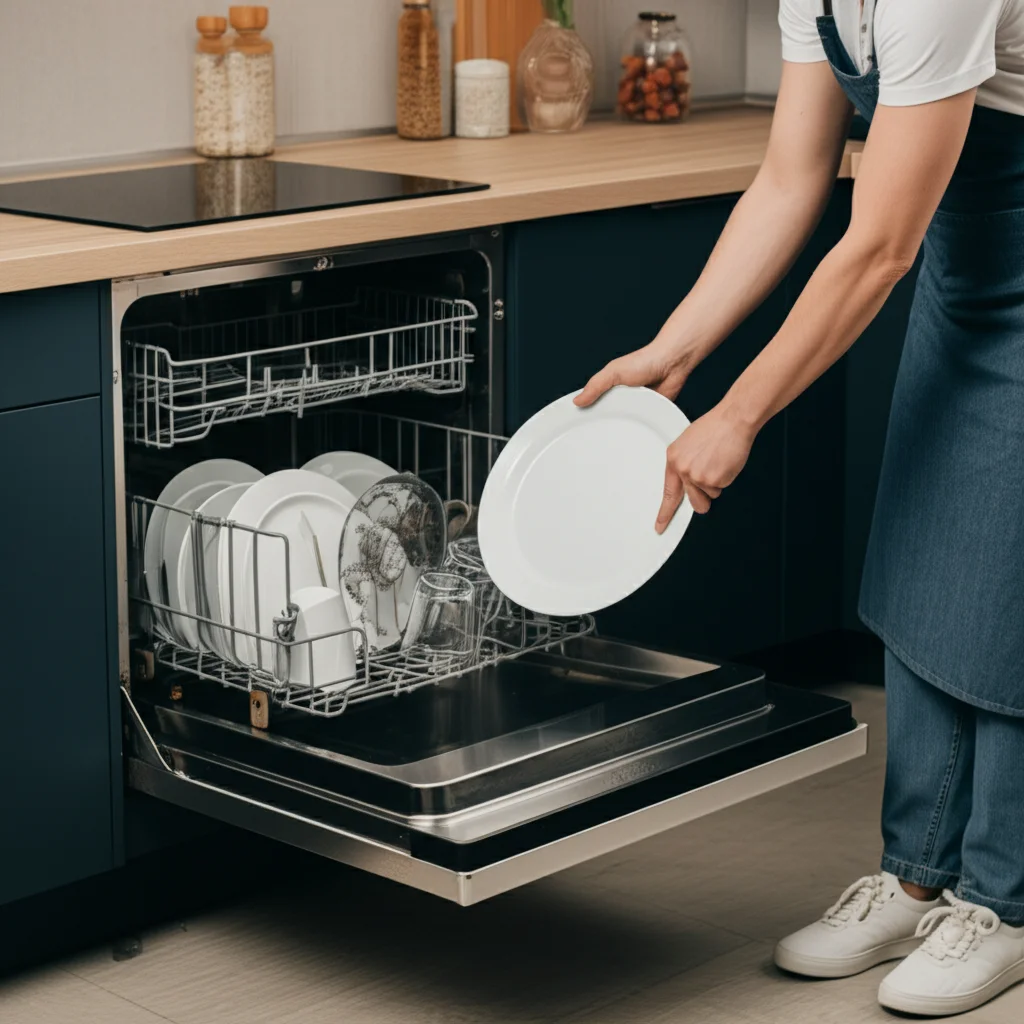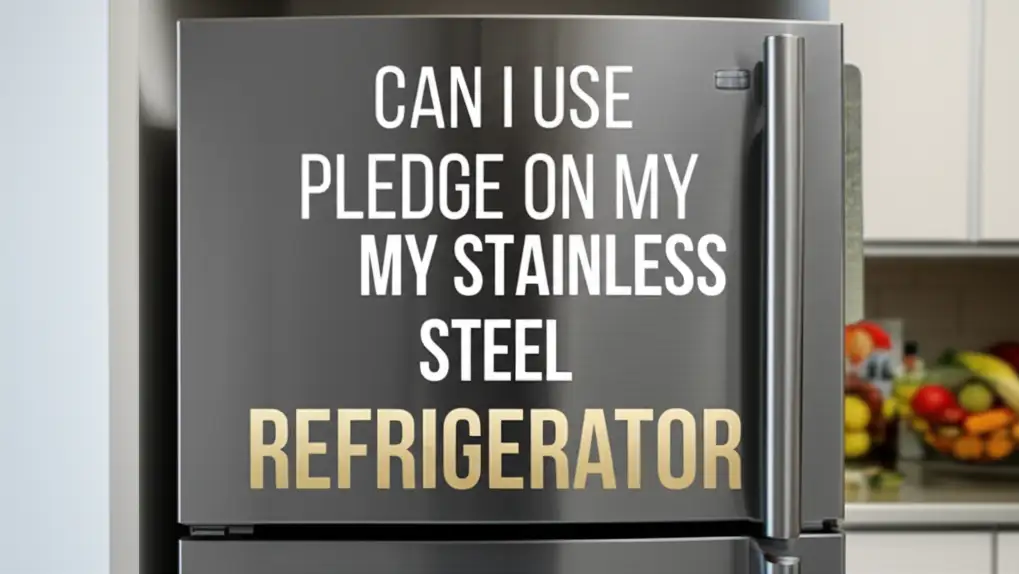· Davia Murnell · Home Care · 17 min read
How To Be The Best Dishwasher

Becoming the Best Dishwasher: A Comprehensive Guide
Do you want sparkling clean dishes every time? Maybe you simply want your dishwasher to work perfectly for years. Many people think dishwashing is just loading dishes and pressing a button. I used to think that too. But there is an art to being the best dishwasher. This means understanding your appliance and preparing your items. You also learn how to load correctly and maintain the machine.
This guide helps you become an expert. We will explore understanding your dishwasher. We will cover proper dish preparation. You will learn optimal loading techniques. We also discuss choosing the right cleaning products. Regular maintenance is key for peak performance. We will also touch on common troubleshooting steps. Follow these steps for great results.
Takeaway:
- Understand your dishwasher’s features and settings.
- Properly scrape and load dishes for effective cleaning.
- Select the correct detergents and rinse aids.
- Perform regular maintenance to keep your appliance running well.
- Address common issues quickly to ensure long life.
Being the best dishwasher involves understanding your machine and its needs. You prepare dishes properly and load them correctly. Use suitable detergents. Regularly clean and maintain the appliance. This process ensures dishes become spotlessly clean and your dishwasher lasts longer.
Setting the Stage: Understanding Your Dishwasher Appliance
Your dishwasher is a powerful kitchen helper. Different models offer unique features. Knowing your appliance helps you use it well. Dishwashers come in various sizes and styles. Some models have advanced wash cycles. Others focus on energy efficiency.
Consider the type of dishwasher you own. Is it a standard-size model? Does it have special racks or spray arms? Look at its control panel. Understand each cycle and option. My old dishwasher had a “pots and pans” cycle. It used more water and heat for tough messes. Newer models often have “sensor wash” options. These detect soil levels and adjust the cycle. Understanding these settings is step one. This knowledge helps you pick the right wash for your load. This makes you a smarter user of your appliance. A good starting point is often knowing what to look for in a dishwasher when you first buy one. This background knowledge helps you use it effectively.
Dishwasher Types and Features
Dishwashers mainly differ in size, finish, and wash functions. Standard models fit most kitchen spaces. Compact models work well in smaller homes. Integrated dishwashers blend into cabinetry. Stainless steel models offer a sleek look.
Features like adjustable racks make loading easier. A third rack provides space for utensils. Bottle jets clean tall items. A good filtration system captures food particles. This stops them from redepositing. Some dishwashers also have a hard food disposer. This grinds up larger food bits. Knowing these features helps you use your specific machine to its full potential. For example, some brands like Bosch offer specific advantages you might want to explore, learning which Bosch dishwasher is the best can help understand quality features.
Preparing Your Dishes: The Pre-Rinse Debate and Best Practices
Preparing dishes before loading is important. Some people rinse every dish until it is spotless. Others just scrape off large food bits. The best practice often lies in the middle. Most modern dishwashers handle food particles well. They have sensors and filtration systems.
Scraping off large food pieces is always a good idea. Remove bones, fruit pits, and stubborn food. These items can clog the drain or filter. Many dishwasher detergents work better when they have some food to cling to. Too much rinsing can confuse the dishwasher’s sensors. The machine might think the dishes are clean already. This can lead to a less effective wash cycle. Always check your detergent instructions. My own experience taught me that scraping, not rinsing, often yields better results. This step is key for clean dishes.
How to Prepare Various Items
Different items need different preparation. Plates and bowls need scraping. Cups and glasses usually need no pre-treatment. For pots and pans, a light rinse might be helpful if food is stuck.
- Plates and Bowls: Scrape all solid food scraps into the trash. Do not pre-rinse excessively.
- Glasses and Cups: Simply place them upside down in the rack.
- Cutlery: Remove any stuck-on food. Place forks and spoons with handles down. Place knives with handles up for safety.
- Pots and Pans: Scrape thoroughly. For baked-on food, a quick soak in the sink helps. Check if your items are dishwasher safe. For example, some specialized kitchenware, like Gotham Steel, is often dishwasher safe, but it’s always good to check product labels.
- Specific Items: Before loading, always confirm if an item is safe. For example, ensure your air fryer is dishwasher safe before putting it in.
This careful preparation makes the wash cycle more efficient. It also helps avoid clogs in your machine. Knowing how to prepare dishes for dishwasher correctly is fundamental for getting clean results.
Mastering the Load: Optimal Dishwasher Loading Strategies
Loading your dishwasher correctly is a skill. It impacts cleaning performance. Proper loading ensures water and detergent reach all surfaces. It also prevents damage to your dishes. Do not overcrowd the racks. Overcrowding stops water from circulating freely. This results in dirty spots.
Place larger items along the sides or back. Bowls and plates face the spray arm. Angle them slightly for better drainage. Cups and glasses go on the top rack. They sit securely between prongs. Make sure nothing blocks the spray arm’s rotation. I always spin the spray arms before closing the door. This confirms they move freely. This simple check saves me from re-washing dishes. This proper method helps you get the cleanest possible wash every time.
Top Rack Loading
The top rack holds smaller, lighter items. Place glasses upside down. Securely position cups and small bowls. Lay plastic items flat or angled. This keeps them from flipping over and filling with water.
- Glasses and Mugs: Place them upside down between the prongs. Do not let them touch each other to prevent chipping.
- Small Bowls: Angle them down for proper drainage.
- Plastic Items: Place them on the top rack. The heat is less intense here, preventing warping. For items like silicone mats, ensure they can go in the dishwasher and place them securely.
- Long Utensils: Lay them flat across the top rack or in a dedicated third rack.
Bottom Rack Loading
The bottom rack handles larger, heavier items. Plates, serving platters, and pots belong here. Position them so water can spray evenly.
- Dinner Plates: Place them in the designated slots. Face them towards the center spray arm.
- Pots and Pans: Lay them on their sides or at an angle. Make sure they do not block the detergent dispenser. For certain items like gas stove grates, ensure they are safe to clean in the dishwasher and load them carefully.
- Cutting Boards: Place them at the front or side, ensuring they do not block the spray arm.
- Serving Bowls: Place them face down and angled for drainage.
Cutlery Basket Loading
The cutlery basket holds forks, spoons, and knives. Proper placement prevents nesting. This ensures each piece gets clean.
- Forks and Spoons: Place them handle-down.
- Knives: Place them handle-up for safety.
- Mix Cutlery: Mix items to prevent nesting. Do not put too many items together.
Powering Your Wash: Choosing Dishwasher Detergents and Aids
The right detergent makes a big difference. Many types exist: powder, gel, and pods. Each has pros and cons. Pods are convenient. They offer a pre-measured dose. Gel detergents are easy to use. Powder detergents are cost-effective. I prefer pods for their simplicity. They dissolve well and clean effectively.
Always use detergent specifically for dishwashers. Regular dish soap causes excessive suds. This can damage your machine. It also makes a big mess. Add detergent just before starting the cycle. This ensures its cleaning power is fresh. Also, consider your water hardness. Hard water may require more detergent or a special additive. Using the correct product ensures a deep clean for your dishwasher and your dishes.
Detergent Types and Usage
- Dishwasher Pods/Tablets: These are popular for convenience. They contain pre-measured detergent, rinse aid, and sometimes other cleaners. Place them in the main detergent dispenser. For example, knowing where to put Finish dishwasher pods is simple: directly in the main dispenser.
- Powder Detergent: This allows you to adjust the amount based on load size and soil level. Fill the main dispenser and close it.
- Gel Detergent: This is gentle on dishes and dissolves quickly. Use the recommended amount in the main dispenser.
Rinse Aid for Spotless Drying
Rinse aid is crucial for spotless drying. It helps water sheet off dishes. This prevents water spots and streaks. It is especially helpful if you have hard water. Most dishwashers have a separate rinse aid dispenser. Fill it regularly. The machine dispenses it automatically during the rinse cycle.
I refill my rinse aid dispenser once a month. This ensures my glasses come out sparkling. Without rinse aid, my glasses often had cloudy spots. This simple step makes a huge difference in appearance. It also helps dishes dry faster.
Keeping It Clean: Essential Dishwasher Maintenance for Longevity
Regular maintenance makes your dishwasher last longer. It also keeps it working efficiently. A clean machine cleans dishes better. Many parts need occasional attention. These include the filter, spray arms, and interior walls. I make a habit of checking these areas every few weeks.
A dirty filter can cause food particles to redeposit. This leaves specks on your clean dishes. Spray arm holes can get clogged. This stops water from reaching all areas. A smelly dishwasher suggests mold or food buildup. Addressing these issues prevents bigger problems later. Regular cleaning saves you money on repairs. It ensures your dishes always come out spotless. Keeping it clean helps you be the best dishwasher.
Cleaning the Filter
Most dishwashers have a removable filter. This filter traps food debris. It prevents clogs in the drain pump. I clean my filter once a month. It is a simple process.
- Locate the Filter: Check your dishwasher manual. Most filters are at the bottom of the tub.
- Remove the Filter: Twist or lift it out.
- Rinse the Filter: Hold it under running water. Use a soft brush to remove food particles. For stubborn debris or sludge, learn how to clean sludge from dishwasher effectively.
- Reinstall: Place the clean filter back in. Ensure it locks into place. Proper filter care prevents many common issues. Knowing how to clean filter in dishwasher is a basic, yet vital, maintenance step.
Cleaning Spray Arms
Spray arms have small holes. These holes spray water onto your dishes. They can become clogged with mineral deposits or food bits. Clogged holes reduce cleaning power.
- Remove Spray Arms: Unclip or unscrew them from their mounts.
- Clear Holes: Use a toothpick or small wire to poke through any clogged holes.
- Rinse Arms: Rinse them thoroughly under warm water.
- Reattach: Securely reattach the spray arms.
Cleaning the Dishwasher Interior
The interior of your dishwasher can accumulate grime, grease, and mineral deposits. This causes odors and reduces cleaning efficiency.
- Vinegar Wash: Place a cup of white vinegar in a dishwasher-safe bowl on the top rack. Run an empty hot water cycle. Vinegar helps break down grease and hard water stains. Learn how to clean dishwasher with vinegar for a simple, effective method.
- Baking Soda Scrub: Sprinkle baking soda on the bottom of the tub. Let it sit overnight. Run a short hot water cycle in the morning. Baking soda absorbs odors. For comprehensive cleaning, combining methods works well. You can learn how to clean dishwasher with vinegar and baking soda for a powerful, natural solution.
- Wipe Down: Wipe the door seal, edges, and dispenser with a damp cloth. Check for black stuff in dishwasher and wipe it away immediately.
- Drain Cleaning: Periodically, you might need to clean the drain area itself. Knowing how to clean dishwasher drain prevents water from pooling. This ensures proper drainage after a cycle.
These regular cleaning steps keep your dishwasher smelling fresh and working at its best. They also help prevent issues like cloudy glasses.
Solving Common Woes: Dishwasher Troubleshooting Made Simple
Even the best dishwashers encounter problems. Learning to troubleshoot common issues saves time and money. It also helps you keep your machine running smoothly. Some problems are simple fixes. Others might need professional help. Knowing the difference is key.
Common issues include dishes not getting clean. Odors can develop. The dishwasher might not drain. Water spots on dishes are also frequent. I once had a problem where my dishwasher made a strange noise. I checked the spray arms for blockages. It turned out to be a piece of cutlery. Quick checks often solve many issues. This section helps you identify and fix these common problems. This approach prevents minor issues from becoming major repairs.
Dishes Not Getting Clean
If dishes come out dirty, several factors could be at play.
- Overloading: Too many dishes block water and detergent.
- Blocked Spray Arms: Food particles or dishes can block the spray arms. Check for free rotation.
- Clogged Filter: A dirty filter recirculates food debris. Clean it regularly.
- Insufficient Detergent: Use the correct amount of detergent. Hard water might need more.
- Wrong Cycle: Choose a cycle suitable for the soil level.
- Water Temperature: Ensure your water heater provides hot water. Dishwashers need hot water to clean effectively.
Dishwasher Odors
A smelly dishwasher is unpleasant. Odors often come from food buildup or mold.
- Clean Filter: A dirty filter is a common cause.
- Run a Cleaning Cycle: Use white vinegar or baking soda. Place a cup of vinegar on the top rack and run a hot cycle. Alternatively, sprinkle baking soda on the bottom and run a short hot cycle. This is a very effective way to clean a smelly dishwasher.
- Clean Door Seal: Wipe down the rubber seal around the door. Mold often grows here. Learn how to clean mold in dishwasher for detailed steps.
- Check Drain: Ensure the drain hose is not kinked or clogged.
Dishwasher Not Draining
If water remains in the bottom of your dishwasher, there is a drainage problem.
- Clogged Filter: Again, a dirty filter can block drainage.
- Air Gap: Check the air gap on your sink. It might be clogged.
- Drain Hose: Ensure the drain hose is not kinked or blocked. Food particles can sometimes block it. Sometimes, you need to manually drain the water. Knowing how to drain dishwasher water manually can be a helpful skill.
- Garbage Disposal: If connected, run your garbage disposal. Food buildup in the disposal can block the dishwasher drain. If you find your dishwasher does not drain, these are usually the first places to check.
Water Spots or Cloudy Glasses
Hard water or insufficient rinse aid causes spots.
- Add Rinse Aid: Ensure the rinse aid dispenser is full.
- Water Softener: Consider a water softener if you have very hard water.
- Vinegar Rinse: Run an empty cycle with vinegar. This helps remove mineral buildup. You can also learn how to clean cloudy glasses from the dishwasher with specific techniques.
- High-Quality Detergent: Some detergents are better at preventing spots.
Elevating Your Dishwashing: Advanced Tips for Sparkling Results
Once you master the basics, you can refine your dishwashing skills. These advanced tips focus on getting truly sparkling dishes. They also help extend your appliance’s life. Think about water temperature and cycle selection. Consider proper detergent storage. These small adjustments make a big difference.
I always pay attention to the water temperature. Hot water is essential for effective cleaning and sanitization. Sometimes I run the hot water in the sink before starting the dishwasher. This ensures the machine gets hot water from the beginning. These simple tricks help achieve the best results. Being the best dishwasher means paying attention to details.
Hot Water is Key
Dishwashers need hot water to activate detergents. They also need it to sanitize dishes. Ensure your water heater is set to at least 120°F (49°C).
- Pre-run Hot Water: Before starting the dishwasher, run your kitchen faucet until the water is hot. This clears cold water from the pipes.
- Avoid Overuse: Do not run other hot water appliances, like showers, while the dishwasher is running. This can reduce water pressure and temperature. Knowing can you shower while the dishwasher is running helps manage household water usage.
Choosing the Right Cycle
Modern dishwashers have many cycles. Each is designed for specific needs.
- Normal Wash: For everyday loads with regular soil.
- Heavy Duty/Pots & Pans: For heavily soiled dishes, pots, and pans. This cycle uses more water and longer wash times.
- Light/Quick Wash: For lightly soiled dishes or glassware that needs a quick rinse.
- Sanitize Cycle: Uses higher water temperatures to kill bacteria. Great for baby bottles or cutting boards.
Select the cycle that matches your load. This ensures efficient cleaning without wasting resources. The cycle length matters for performance. For example, knowing how long does a dishwasher take to finish can help you plan your tasks.
Detergent Storage and Usage
Store detergents in a cool, dry place. Keep them away from moisture. Moisture can cause powder to clump. It can also make pods stick together.
- Fresh Detergent: Use fresh detergent. Detergents lose effectiveness over time.
- Proper Dosage: Follow detergent instructions. Too little detergent means dirty dishes. Too much can leave a residue.
Regular Deep Cleaning
Beyond routine filter cleaning, a deep clean is beneficial every few months.
- Empty Cycle with Dishwasher Cleaner: Use a commercial dishwasher cleaner. Follow product instructions.
- Clean the Vent: Over time, grease and grime can build up in the dishwasher vent. Learning how to clean dishwasher vent can improve drying performance and prevent odors.
- Remove Calcium Buildup: If you have hard water, calcium can build up inside the dishwasher. Learning how to clean calcium buildup in dishwasher prevents scale and ensures efficient operation.
These advanced tips help you maximize your dishwasher’s performance. They ensure your dishes come out consistently clean and sparkling.
FAQ Section
How often should I clean my dishwasher filter?
You should clean your dishwasher filter at least once a month. If you run your dishwasher daily or wash very dirty dishes often, clean the filter more frequently. A clean filter prevents food particles from redepositing on dishes and stops odors from forming inside the machine. This simple step improves cleaning results significantly.
Can I put regular dish soap in my dishwasher?
No, never use regular hand dish soap in a dishwasher. Hand dish soap produces too many suds. This excessive sudsing can overflow your dishwasher, create a huge mess, and potentially damage the appliance. Always use detergents specifically formulated for dishwashers to ensure proper cleaning and machine function.
Why are my dishes still wet after a dishwasher cycle?
Dishes often stay wet due to several reasons. You might need to add rinse aid to the dispenser. Rinse aid helps water sheet off dishes, promoting faster drying and preventing spots. Also, plastic items take longer to dry than glass or ceramic. Ensure your dishwasher’s heating element or drying fan works correctly.
What causes a bad smell in my dishwasher?
Bad smells usually come from trapped food particles or mold buildup. Regularly clean your dishwasher filter, spray arms, and the door seal. Running an empty hot water cycle with white vinegar or baking soda helps eliminate odors. This process sanitizes the interior and breaks down any lingering grime.
Is pre-rinsing dishes necessary for modern dishwashers?
Extensive pre-rinsing is often not necessary for modern dishwashers. Most newer models have sensors that detect soil levels. They adjust the wash cycle accordingly. Scraping off large food pieces is enough. Too much rinsing can lead to less effective cleaning, as the detergent needs some food to cling to and activate properly.
Can I run the dishwasher with a half load?
Yes, you can run the dishwasher with a half load. Many modern dishwashers have a “half load” or “light load” cycle. This option uses less water and energy for smaller loads. If your dishwasher does not have this specific setting, you can still run it, but it will use the full amount of water and energy for a standard cycle.
Conclusion
Becoming the best dishwasher is about skill, knowledge, and consistent effort. It is more than just loading dishes. You learn to maximize your appliance’s potential. We covered understanding your machine. We discussed preparing your dishes. We also explored optimal loading, choosing the right products, and regular maintenance. These practices ensure spotless dishes and a long-lasting dishwasher.
By following these tips, you will see a real difference. Your dishes will sparkle. Your kitchen will feel cleaner. You will also extend the life of your valuable appliance. Make these practices part of your routine. You will become the best dishwasher for your home. Your efforts will pay off with brilliant results every time. Keep learning and apply these simple methods.





